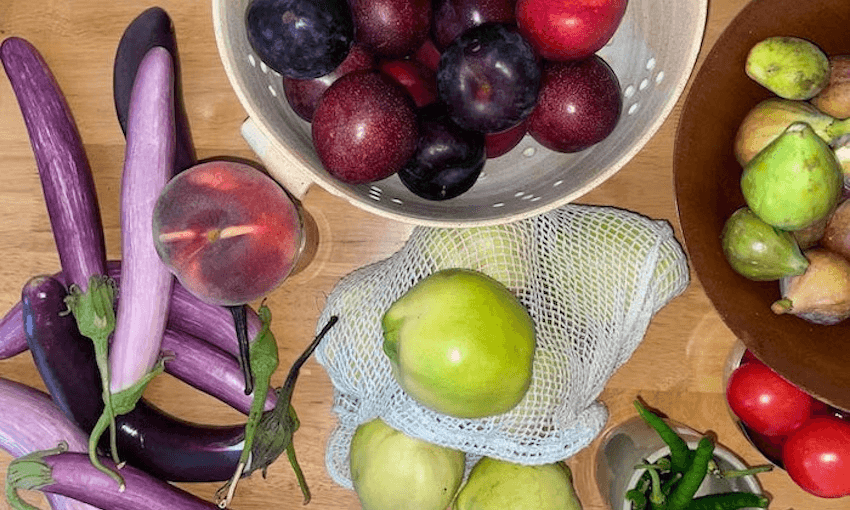Lucinda Bennett on the art of being greedy but resourceful.
This is an excerpt from our weekly food newsletter, The Boil Up.
When I picture the market, it is always this time of year. Crisp air, dripping nose, counting coins with cold fingers. Sunlight pale, filtered through specks of dew still suspended in the cool morning. Summer’s bounty of berries may have disappeared from the stalls, but there are still a few taut glossy plums, sugar baby watermelons stacked like bowling balls, troughs of dusky late season tomatoes and aubergines the size of newborns dark and glistening like a puddle under streetlights. And now there are pears, firm nashi cocooned in thin paper, a tumble of new mandarins, crumpled bags of tiny perfumed figs, bundles of minerally kale, tubs of grisly blood-brown beetroot, rows of glowing daikon thick as an arm.
At the market, I am voracious, greedy, rash. When faced with an abundance of radiant, fairly priced produce, I will always buy too much: more than I can eat, more than I have time to cook, but I refuse to let anything go to waste. When I arrive home, shoulders red beneath straining bag straps, I play fridge tetris. The crisper drawer won’t close. I wash, spin, rearrange. I strip frilly leaves from stalks, roast tomatoes whole in a deep bath of olive oil with garlic and branches of oregano cut from the bush that is slowly colonising my entire garden. I dice the aubergine that is so large the cubes fill an entire sheet pan, chip a frozen wodge of chopped garlic from its dedicated ice tray, soften it in the microwave before adding olive oil, salt, smashed cumin seeds, oily Aleppo pepper, a handful of oregano (so much oregano), whisk and massage into the aubergine so each spongy piece is smothered in flavour. This goes into the oven above the tomatoes – no timer, just however long it takes for them to turn golden and jammy, to sigh and yield when I scoop them into their glass tub.
By the end of the week, the tubs are empty. Confit tomatoes have become rich pasta sauce. Kale has been transformed into a mustardy salad with walnuts and parmesan, eaten for lunch with boiled eggs and sardines. The aubergines were eaten beneath garlicky yoghurt as çilbir and alongside roast honey chicken with nutty brown rice and spring onions. I cooked the apples and floury pears in a seedy crumble that we ate for breakfast and dessert. There’s still produce in the crisper, but it’s only the misfits now: wilting spinach that needs to be eaten today, four enormous misshapen breakfast radishes, a rainbow of nubby peppers that turned out to be more jalapeño than capsicum.
I slice the radishes and pickle them with a little lemon juice and salt, ready to be tucked into rice bowls. The peppers are halved and roasted – I accidentally apply lip balm without washing my hands and my face burns for the rest of the afternoon. I’ll make a kind of faux-romesco sauce with them and some toasted walnuts – that should temper their heat. The spinach will join half a block of feta in a frittata made using my failsafe formula: cook the add-ins (today this will be onions, diced kale stalks and spinach) in an ovenproof pan, whisk a quarter cup of full-fat dairy (usually greek yoghurt) with half a dozen eggs and season well before adding to the pan along with the crumbled feta. Once the edges have started to firm up, whack the pan in the oven (preheated to 180°C) and take out when the centre is still a little wobbly and custardy, around 20 minutes.
Anything left – three flaccid carrots, half a leek and a few ribs of celery – will be diced and frozen, if I can find room in the freezer, a ready-to-go soffritto for the inevitable stews and ragu soon to be on heavy rotation as autumn swirls into winter and I begin to crave spoonable foods, bowlfuls of soup, sauces cooked slow and enriched with butter. I may be greedy, but I’m resourceful. I tell myself that next time, I’ll restrain myself, but by then there will be fresh kūmara, citrus, and maybe shiitake mushrooms…

